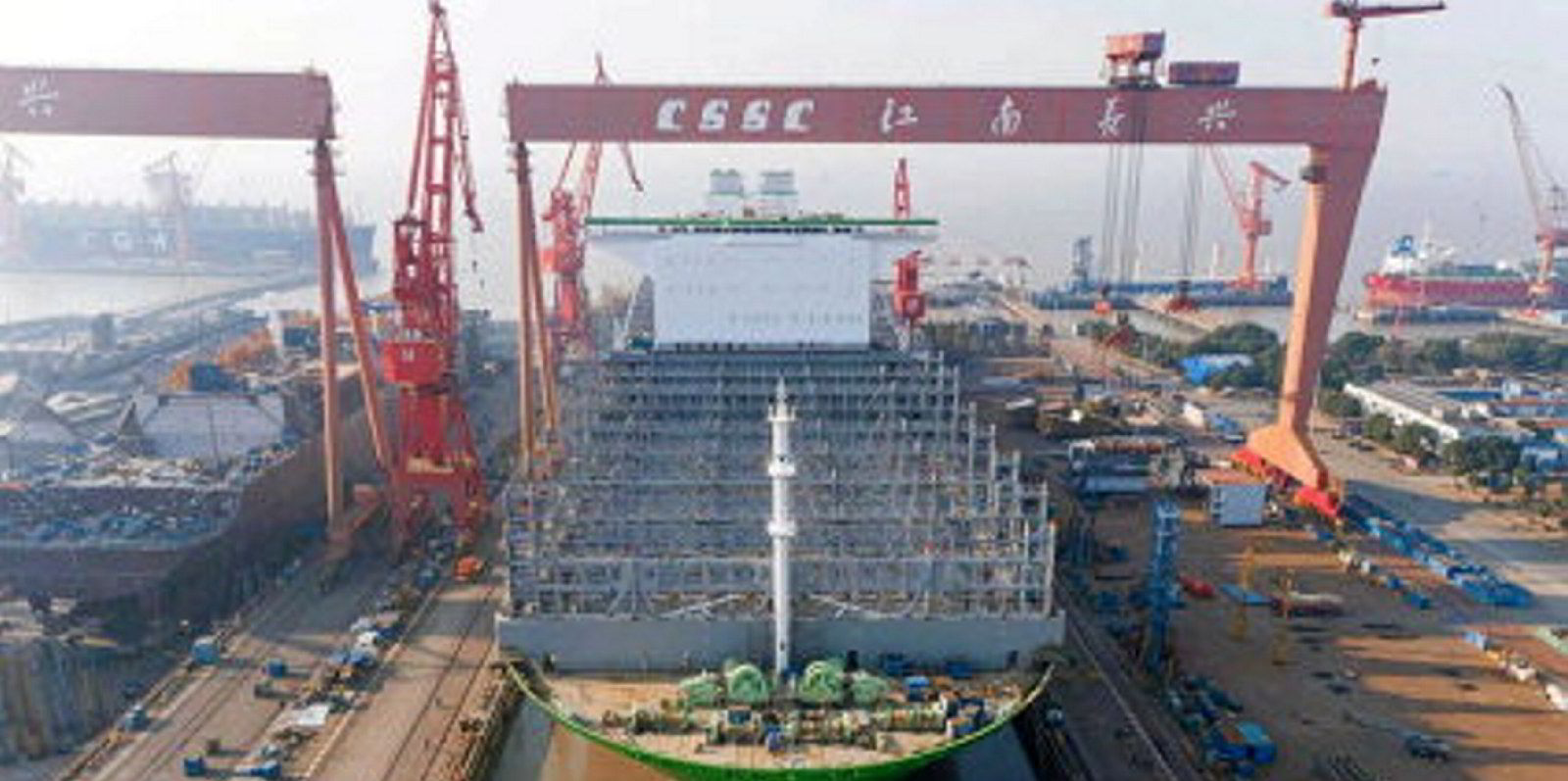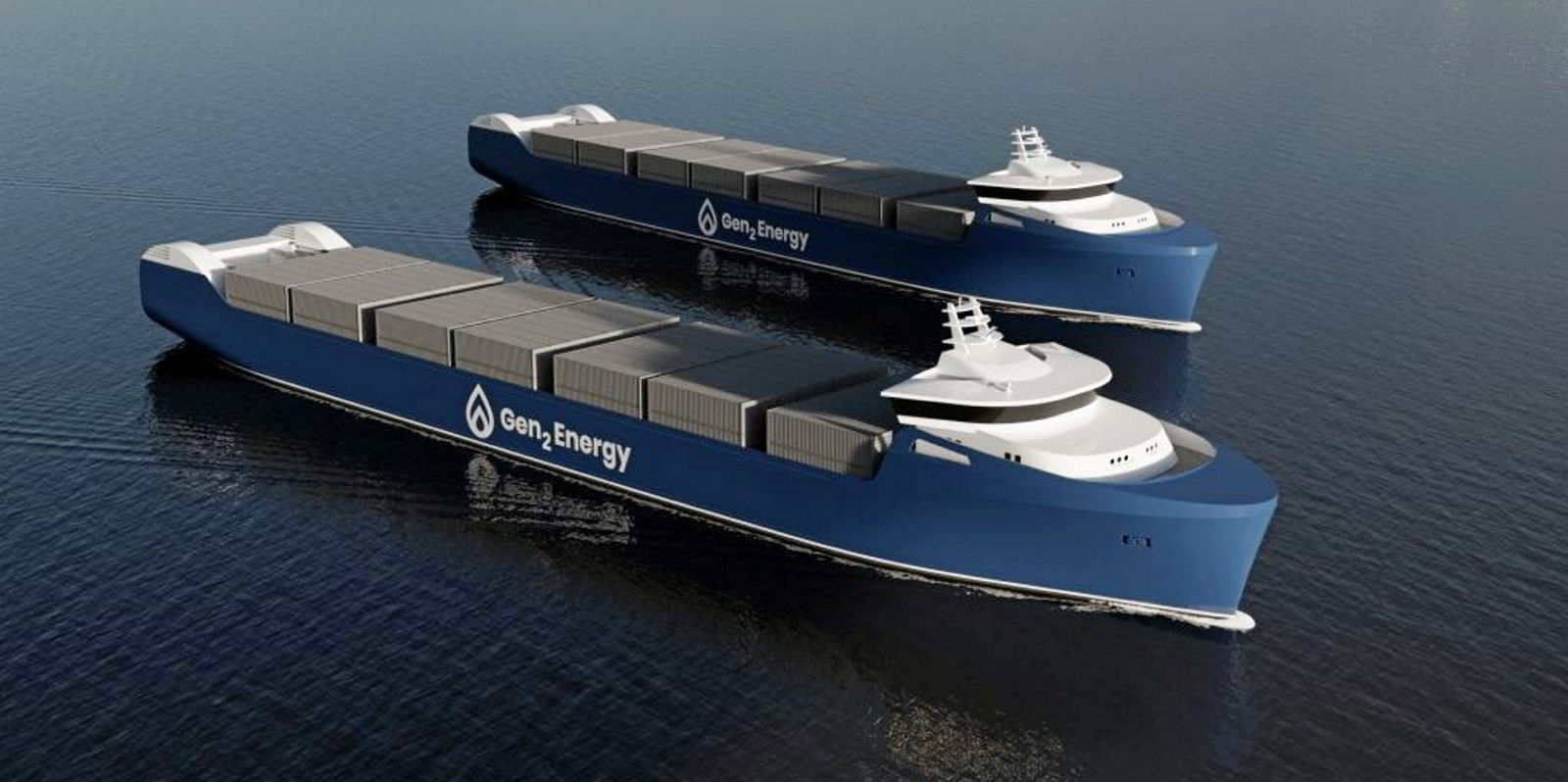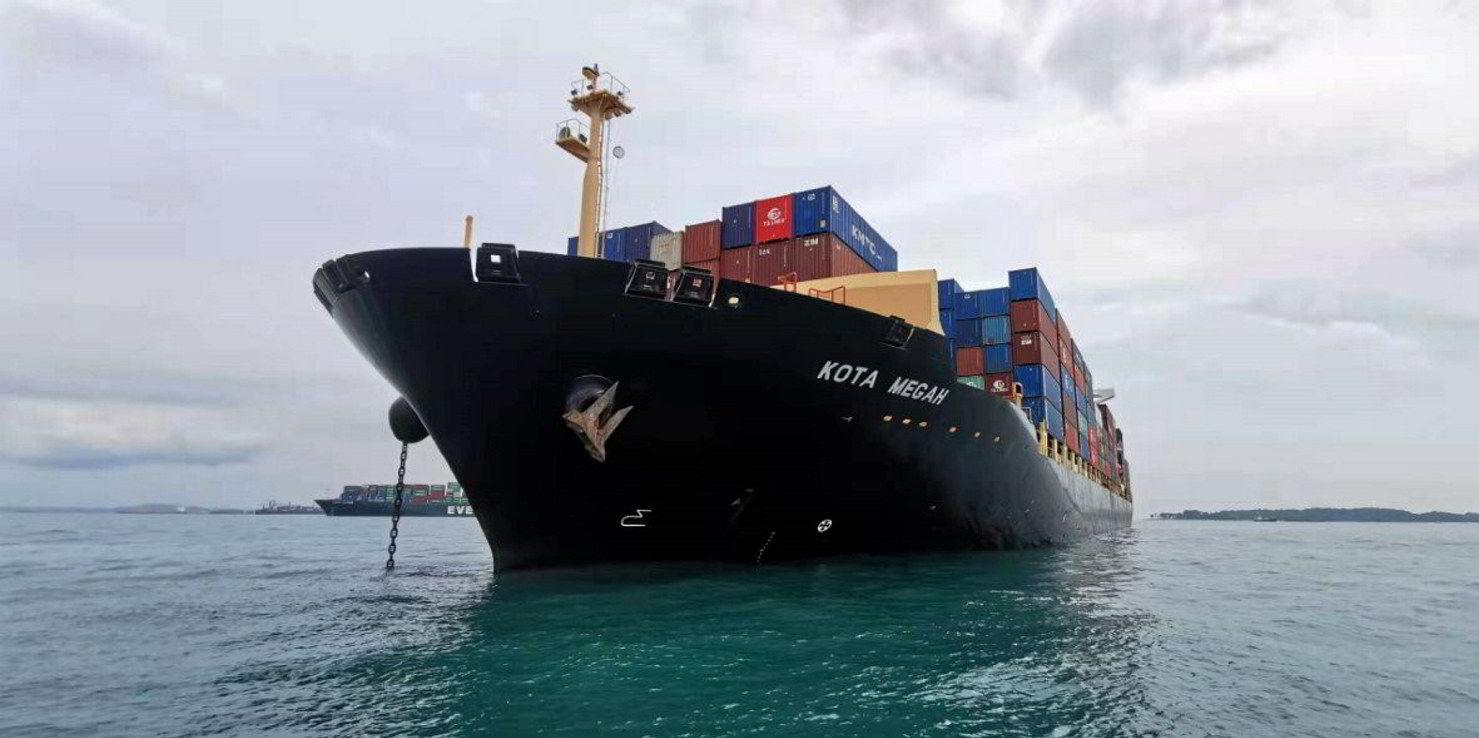LNG-capable container vessels now make up a quarter of the sector’s newbuilding orderbook.
But consultancy Alphaliner is questioning whether the price of the gas means ships already on the water are burning gas oil instead.
The company said there has been a surge in orders over the past year, lifting the number of LNG dual-fuel vessels to 138 units of 1.67m teu.
This compares to fewer than 50 ships of around 720,000 teu a year ago.
The majority of these newbuildings will enter the market in 2023 and 2024.
And the proportion of container ship orders with alternative propulsion options rises to 28% when methanol-powered units are added, Alphaliner said.
French line CMA CGM remains the pioneer of LNG vessels, with 80% of its newbuildings capable of burning the gas.
This refers to owned vessels and to chartered tonnage that is already committed to join CMA CGM upon delivery.
In addition, CMA CGM is said to be in advanced negotiations to place orders for another nine LNG dual-fuel megamax vessels of 23,000 teu with CSSC Group in China.
“Most likely, these ships would be sisters of the nine CMA CMA Jacques Saade-class vessels delivered in 2020 and 2021,” Alphaliner said.
MSC burning gas oil?
Swiss giant Mediterranean Shipping Co (MSC) has been fairly slow to adopt LNG, but has changed its stance and placed orders for numerous dual-fuel ships, either directly or through charter commitments, the consultancy added.
MSC now has the largest amount of LNG-powered capacity on order, at just shy of 420,000 teu.
In part, this is simply due to MSC’s absolutely massive overall orderbook, which stands at close to 1.2m teu, about twice as much as the second-ranked Evergreen, Alphaliner explained.
MSC’s very-first LNG dual-fuel ship, the 14,280-teu MSC Washington, only positioned to Port Kelang this week to phase into the carrier’s transpacific network.
Soaring prices
“Soaring LNG prices have however reportedly prompted the carrier to operate the ship’s main engine on marine gas oil for the time being, while the inevitable boil-off from the limited amount of LNG already bunkered onto the ship will be used to power the auxiliary engines,” Alphaliner said.
“This raises the question of what other shipping lines with dual-fuel tonnage are doing in that respect and whether all LNG dual-fuel ships of the current fleet are actually running on LNG at the moment,” the company added.
German line Hapag-Lloyd will soon have the biggest such vessels, with 12 23,660-teu units contracted at DSME in South Korea for 2023 and 2024 delivery.
These are currently the only LNG-powered megamaxes in the orderbook.
Neo-panamaxes are the most popular LNG dual-fuel type.





